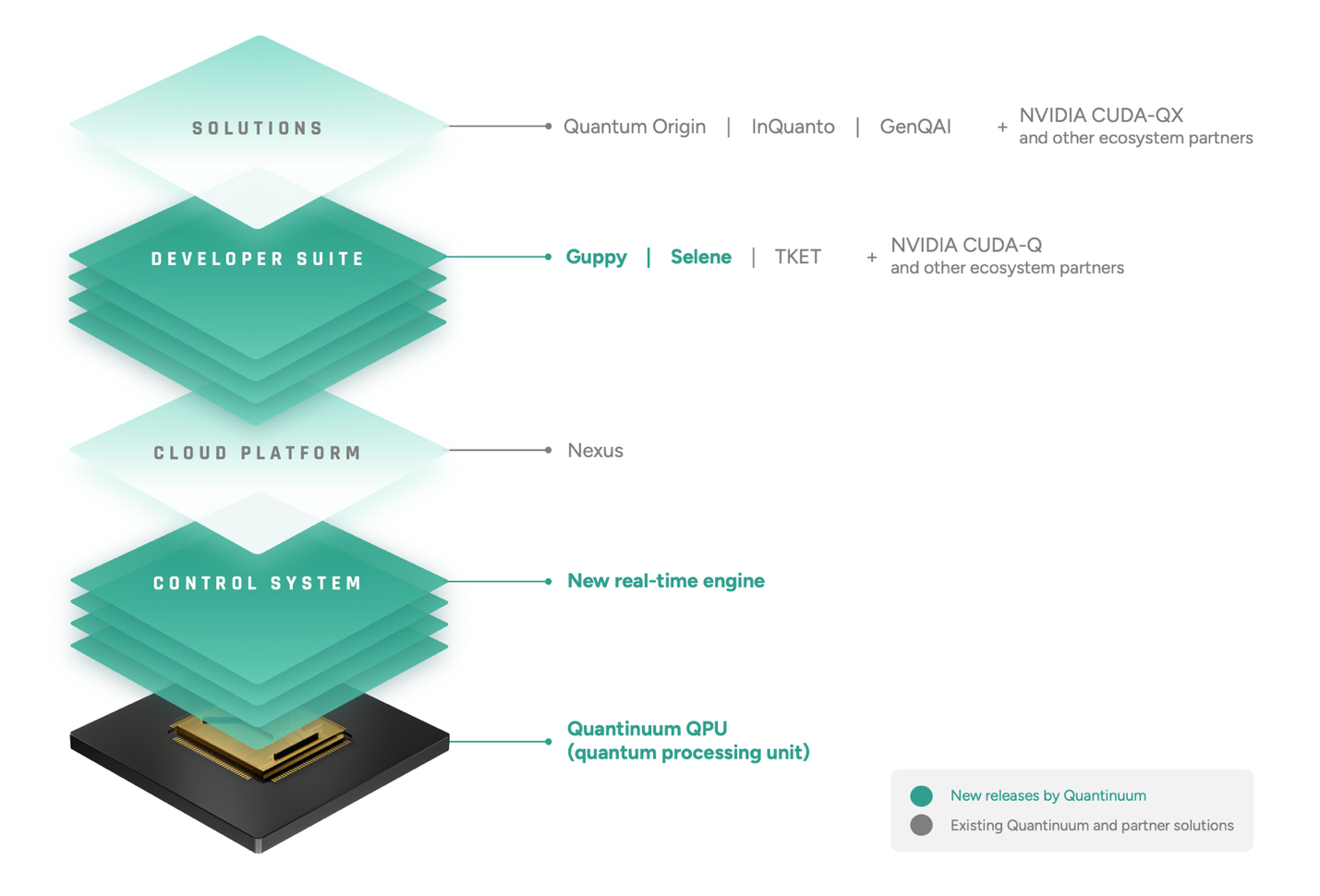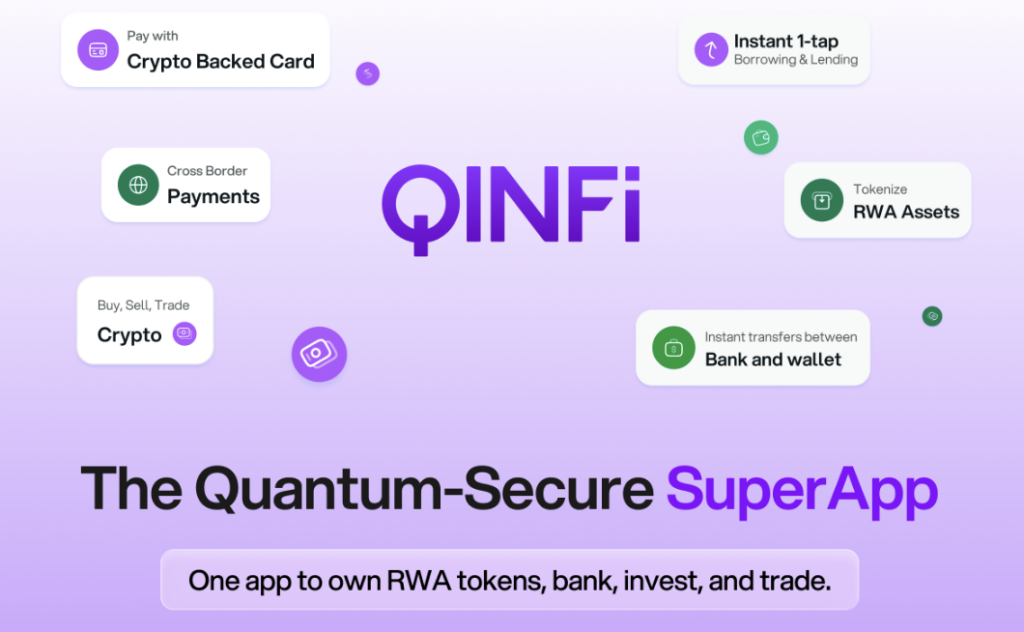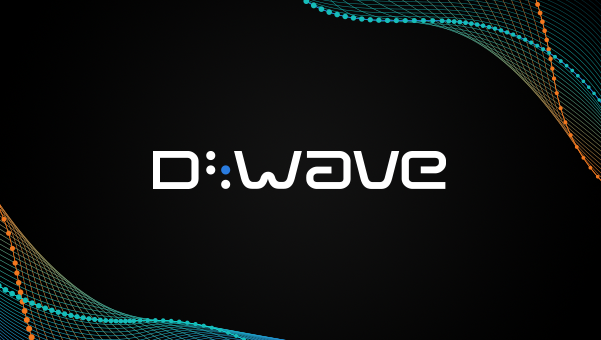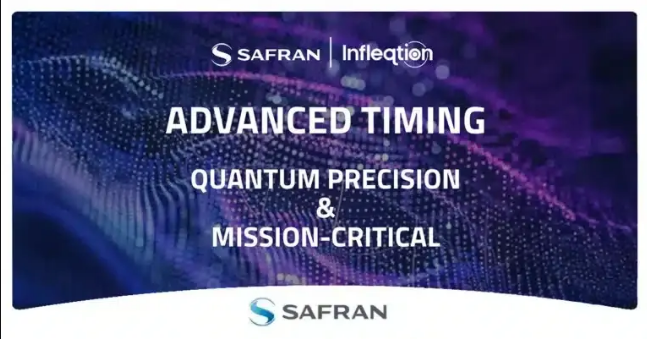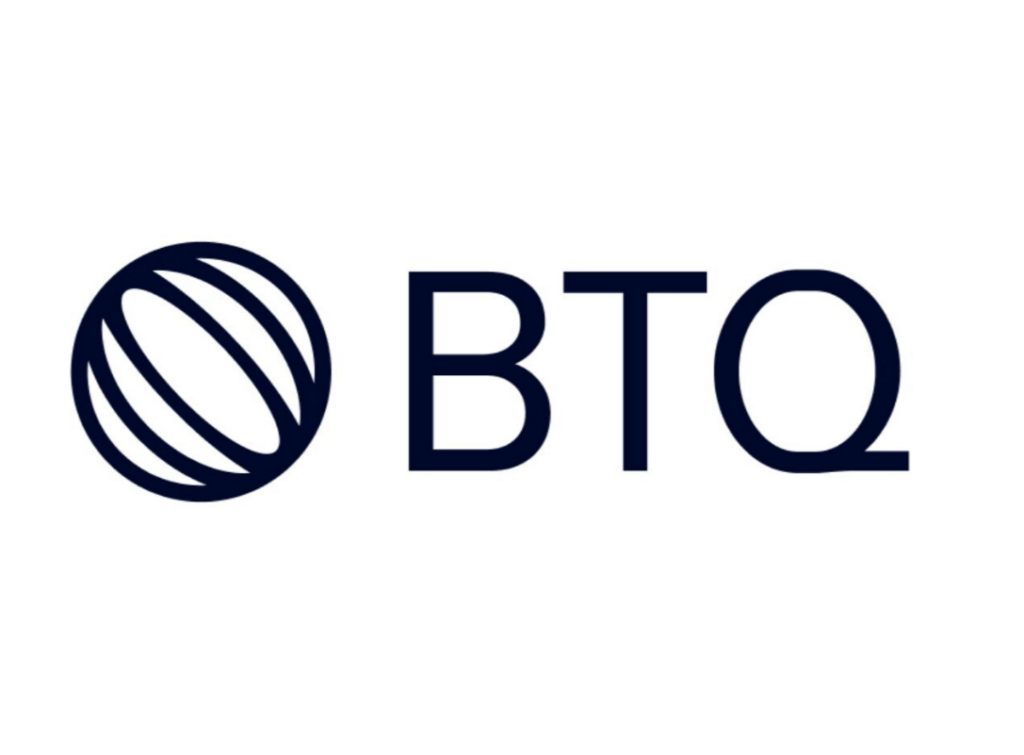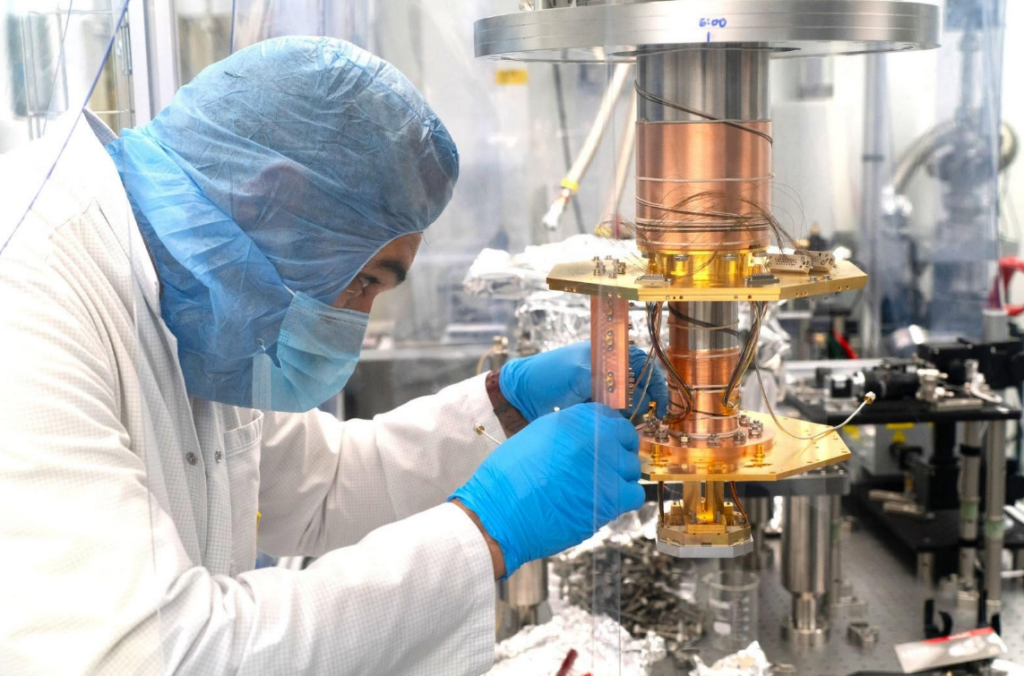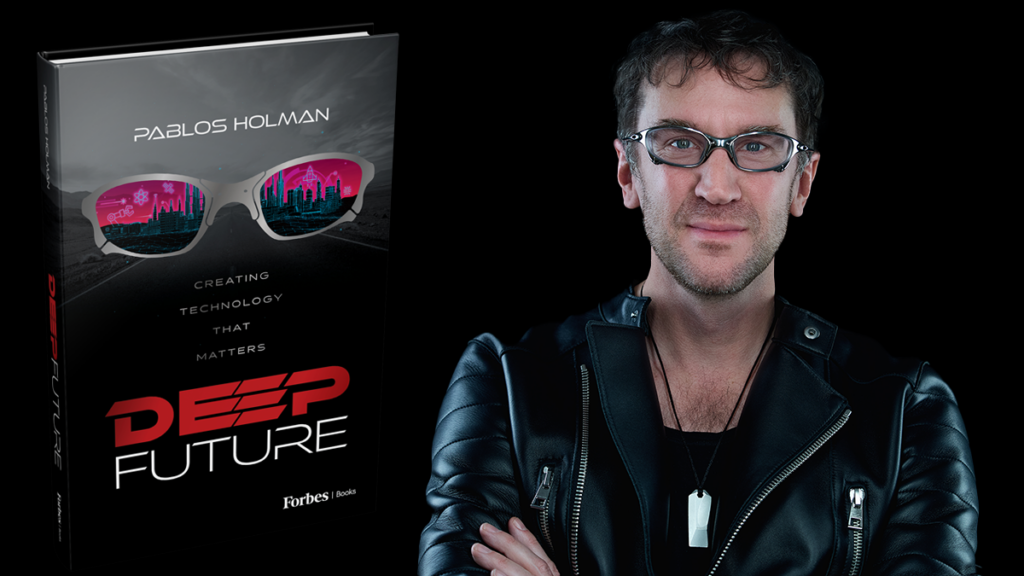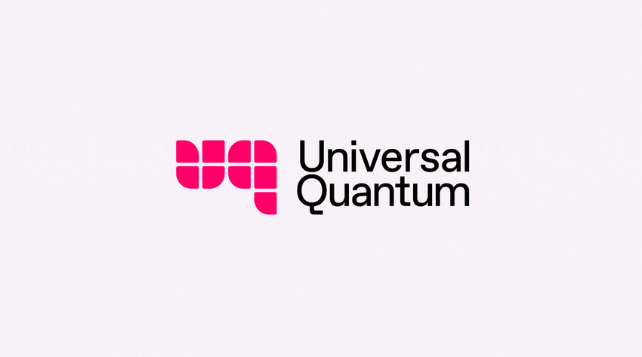Insider Brief
- Quantinuum announced it will launch its Helios quantum computer later this year with a new full-stack software platform designed to lower barriers to programming and advance fault-tolerant quantum computing.
- The upgraded stack introduces Guppy, a Python-based programming language, and Selene, an emulator that mirrors Helios for testing and verification, alongside existing tools TKET and Nexus.
- The company says the stack delivers faster time-to-solution, improved error correction support, and compatibility with industry standards such as Quantum Intermediate Representation (QIR).
Quantinuum is preparing to launch Helios, its next-generation quantum computer, with more than just new hardware. The company reports in a company blog post that Helios will debut as part of a new “full-stack” platform designed to make programming easier, speed up results, and push the field closer to fault-tolerant quantum computing, according to a blog post.
The move marks an effort to address one of the central problems in quantum computing: it is still too difficult to program and too expensive to access. Quantinuum’s new stack adds tools aimed at broadening developer access while providing the foundation for more advanced research.
Quantinuum’s current hardware — its H1 and H2 systems — has been used to set records in qubit fidelity and power applications in cybersecurity, chemistry, and artificial intelligence. But much of that progress has relied on tightly integrated software.

Until now, the company’s stack has centered on two tools: TKET, an open-source compiler, and Nexus, its cloud-based software-as-a-service platform for running programs on quantum processors. With Helios, Quantinuum is adding two new layers: Guppy, a programming language designed for quantum systems, and Selene, an emulator that mirrors the behavior of Helios for testing and verification.
The Quantinuum team writes: “Most importantly, this stack is designed with the future in mind as Quantinuum advances toward universal, fully fault-tolerant quantum computing.”
Guppy: Quantum Programming in Plain Python
Guppy is described as an open-source language embedded in Python, a widely used classical programming language. The team argues this makes quantum programming accessible to a broader set of developers by replacing low-level, gate-by-gate programming with structured, dynamic code.
Unlike older methods that required painstaking construction of circuits, Guppy allows programmers to write higher-level instructions with standard features like loops and conditionals. Programs can adapt in real time as the quantum machine generates results.
“As Quantinuum leads the transition from the noisy intermediate scale quantum (NISQ) era to fault-tolerant quantum computing, Guppy represents a fundamental departure from legacy circuit-building tools,” the blog post states. “Instead of forcing developers to construct programs gate-by-gate, a tedious and error-prone process, Guppy treats quantum programs as structured, dynamic software. With native support for real-time feedback and common programming constructs like ‘if’ statements and ‘for’loops, Guppy enables developers to write complex, readable programs that adapt as the quantum system evolves. This approach unlocks unprecedented power and clarity, far surpassing traditional tools.”
Tackling Error Correction
Error correction remains one of the biggest hurdles to useful quantum computing. Qubits are fragile, and small disturbances can cause them to lose information. Quantinuum claims Guppy was designed to support a flexible approach to error correction codes, allowing developers to test different methods rather than being locked into one architecture.
The company writes its quantum charge-coupled device, or QCCD, architecture allows developers to implement protocols such as magic state distillation, teleportation and other advanced routines. This flexibility and adaptability, according to the blog post, could accelerate the timeline for achieving fault-tolerant machines.
As NVIDIA increasingly seeks to integrate its tech with emerging quantum computing technologies, the new stack also integrates with NVIDIA’s CUDA-Q tools, allowing users to employ out-of-the-box decoders for error correction instead of building their own.
Real-Time Control
Quantinuum is also introducing what it calls a next-generation control system, which allows quantum operations to be guided dynamically by measurements as they occur. That real-time responsiveness is an important step toward scaling from thousands to millions of qubits, the team suggests.
At a practical level, the system enables programs to use recursion and feedback loops, basic features of classical computing that have been difficult to reproduce in quantum systems. The Quantinuum team argues this will cut memory errors and improve algorithm efficiency.
The blog post notes: “At the hardware level, features like real-time transport enable dynamic software capabilities, such as conditionals, loops, and recursion, which are all foundational for scaling from thousands to millions of qubits. These advances deliver tangible performance gains, including faster time-to-solution, reduced memory error, and greater algorithmic efficiency, providing the foundational support required to convert algorithmic advances into useful real-world applications.”
Selene: The “Digital Sister”
One of the complaints about quantum computing is accessibility, specifically access to quantum hardware, which is scarce and results in limited availability for researchers and developers. To address that bottleneck, Quantinuum is releasing Selene, a new emulator that it calls a “digital sister” to Helios.
Selene goes beyond generic simulators by reproducing some of the complex runtime behavior unique to Helios, such as measurement-dependent control flow. It allows Guppy programs to be tested immediately on classical hardware before being deployed to the quantum machine.
The emulator also supports multiple backends, including tensor network and matrix product state simulations optimized for NVIDIA GPUs. This makes it possible to scale simulations to larger systems than were previously feasible.
All of these tools — TKET, Guppy, Selene — are tied together through Nexus, which remains Quantinuum’s main access point. Nexus is described as an “all-in-one computing platform” where developers can manage programs, analyze results, and collaborate.
The system now supports the Quantum Intermediate Representation (QIR), an industry-standard format, meaning users can also access Helios through languages such as Microsoft’s Q#, NVIDIA’s CUDA-Q, or Oak Ridge National Laboratory’s XACC tools.
The blog post reports: “Nexus serves as the middle layer that connects every part of the stack, providing a cloud-native SaaS environment for full-stack workflows, including server-side Selene instances. Users can manage Guppy programs, analyze results, and collaborate with others, all within a single, streamlined platform.”
The team also writes: “Our entire stack, including Nexus and Selene, supports the industry-standard Quantum Intermediate Representation (QIR) as input, allowing users to program in their preferred programming language.”
Toward Fault Tolerance
Quantinuum is positioning itself as one of the global leaders in integrating hardware and software for quantum computing. Its pitch with Helios and the new stack is that users will not only gain improved performance today but also be positioned for the transition to truly fault-tolerant systems.
The blog post concludes: “We remain the leaders in quantum computing and the only provider of integrated quantum resources that will address our society’s most complex problems.”
The launch of Helios and its accompanying stack is scheduled for later this year. Quantinuum has announced a webinar for Sept. 19 to showcase the new features.

